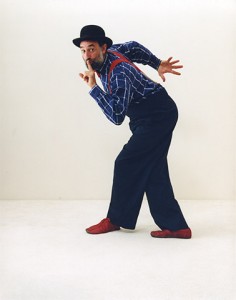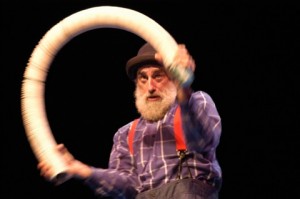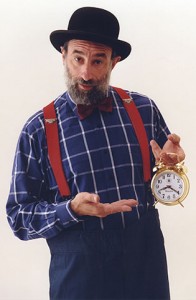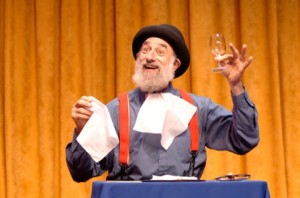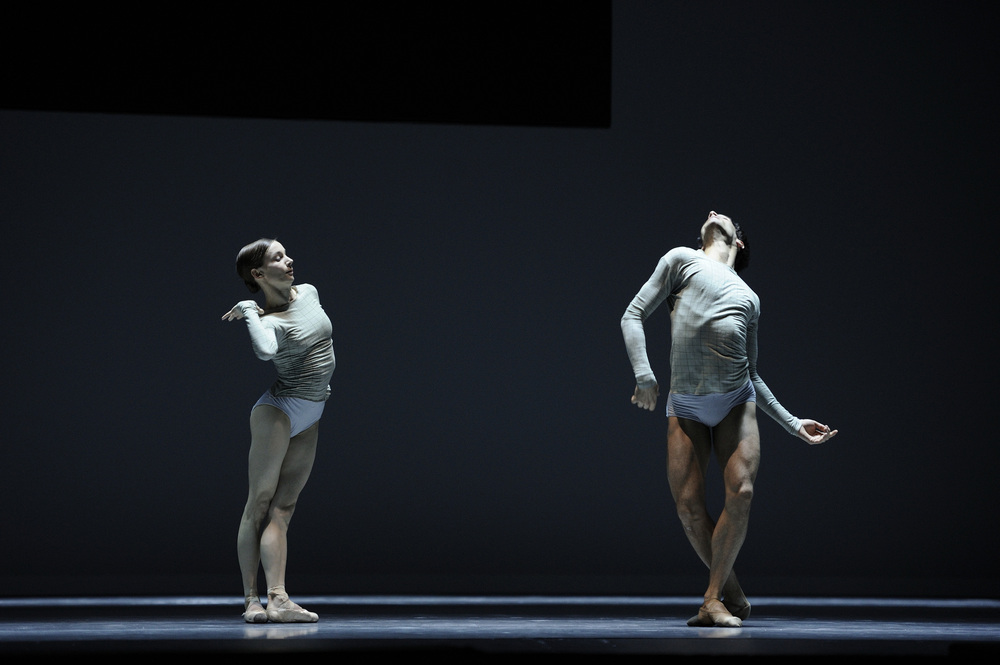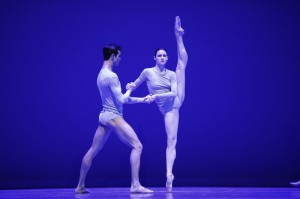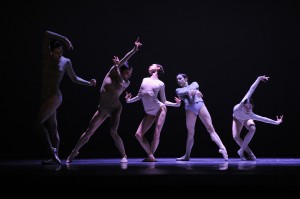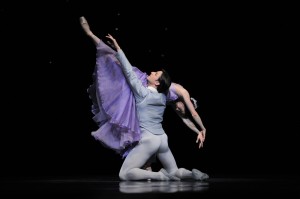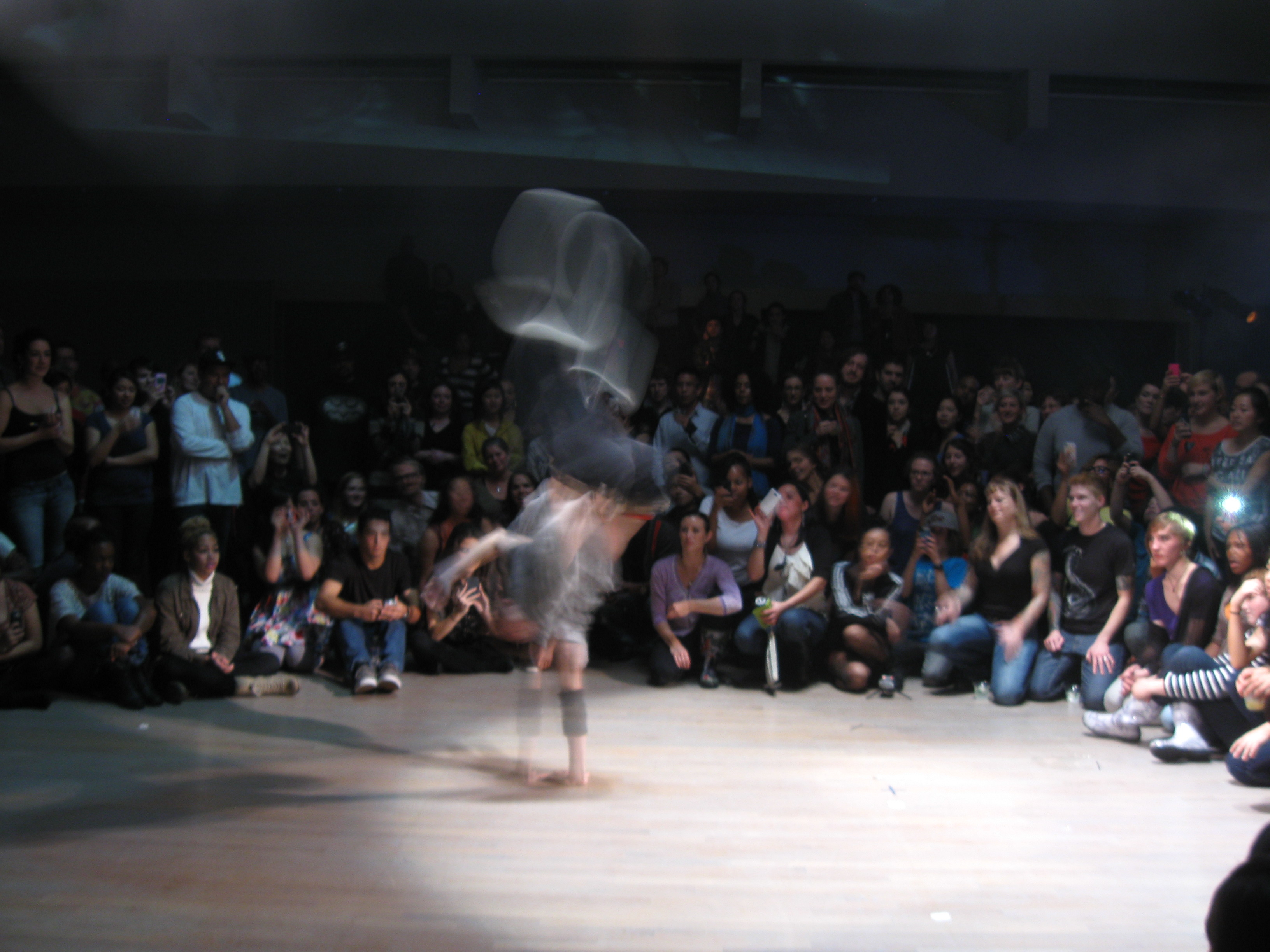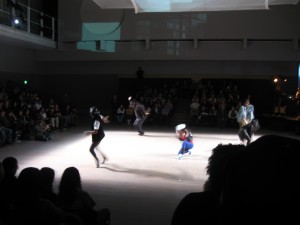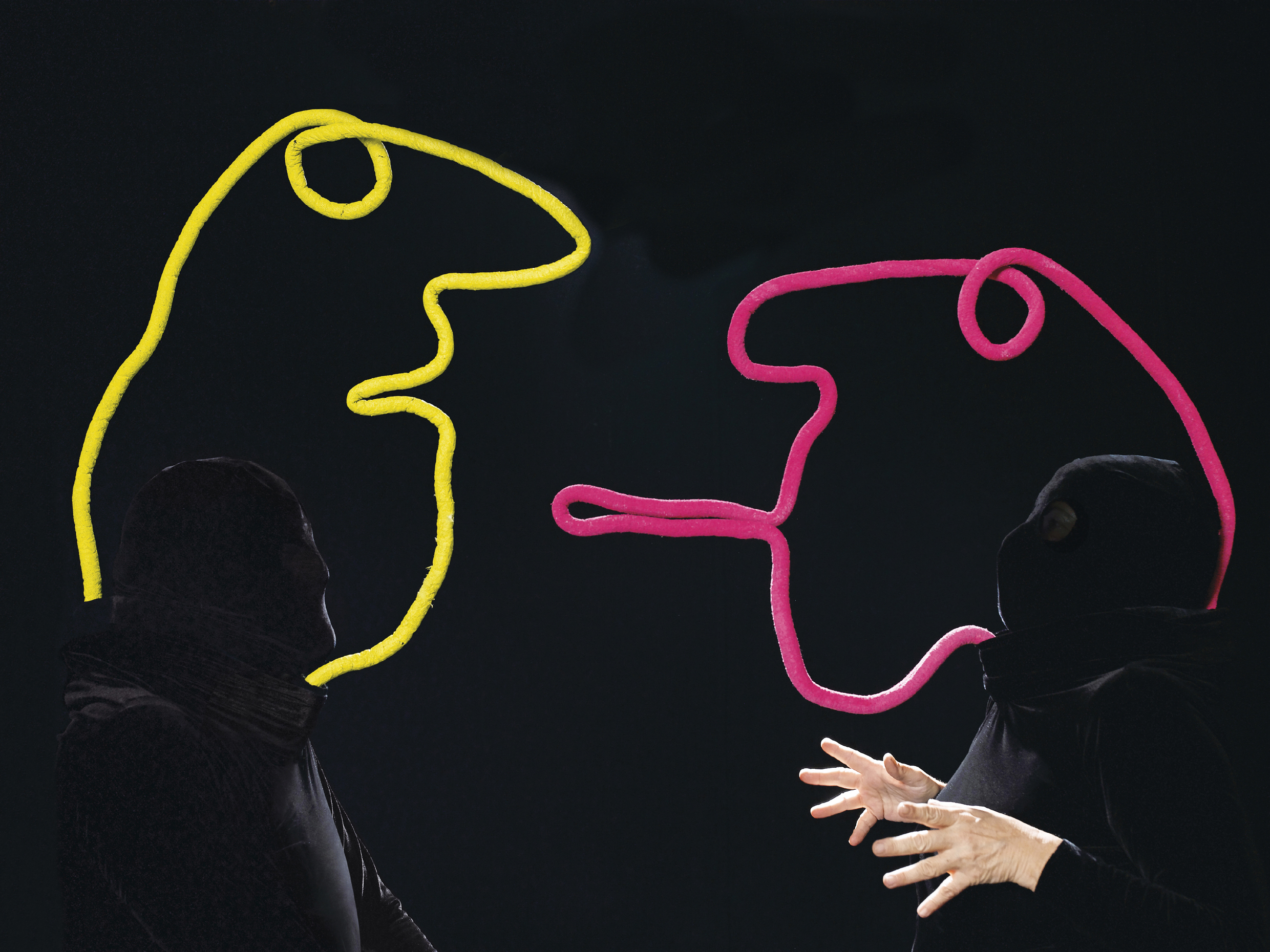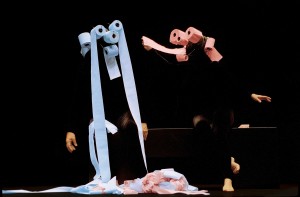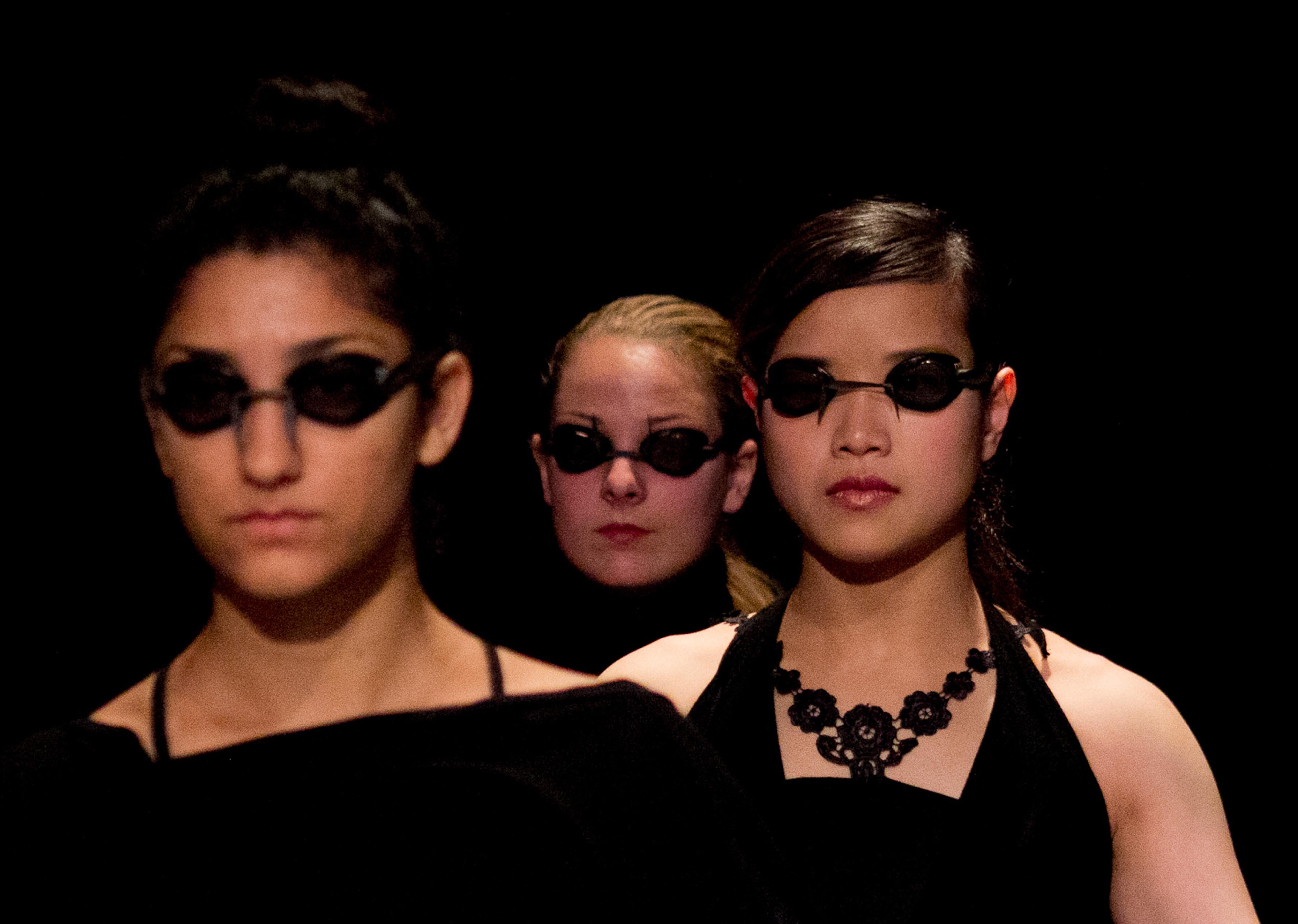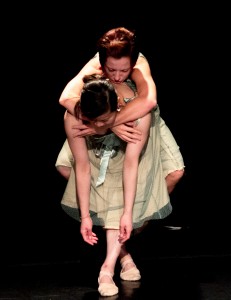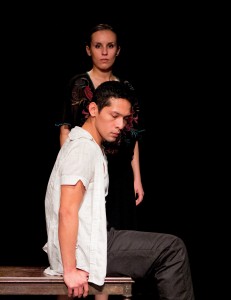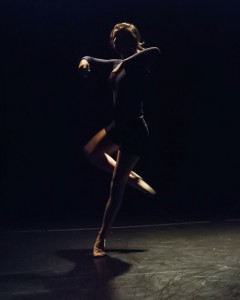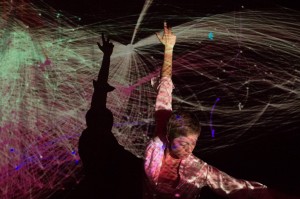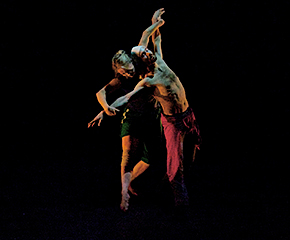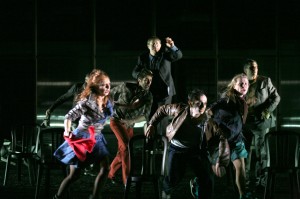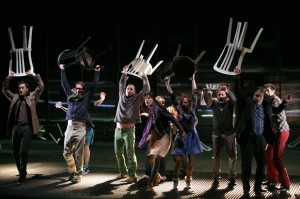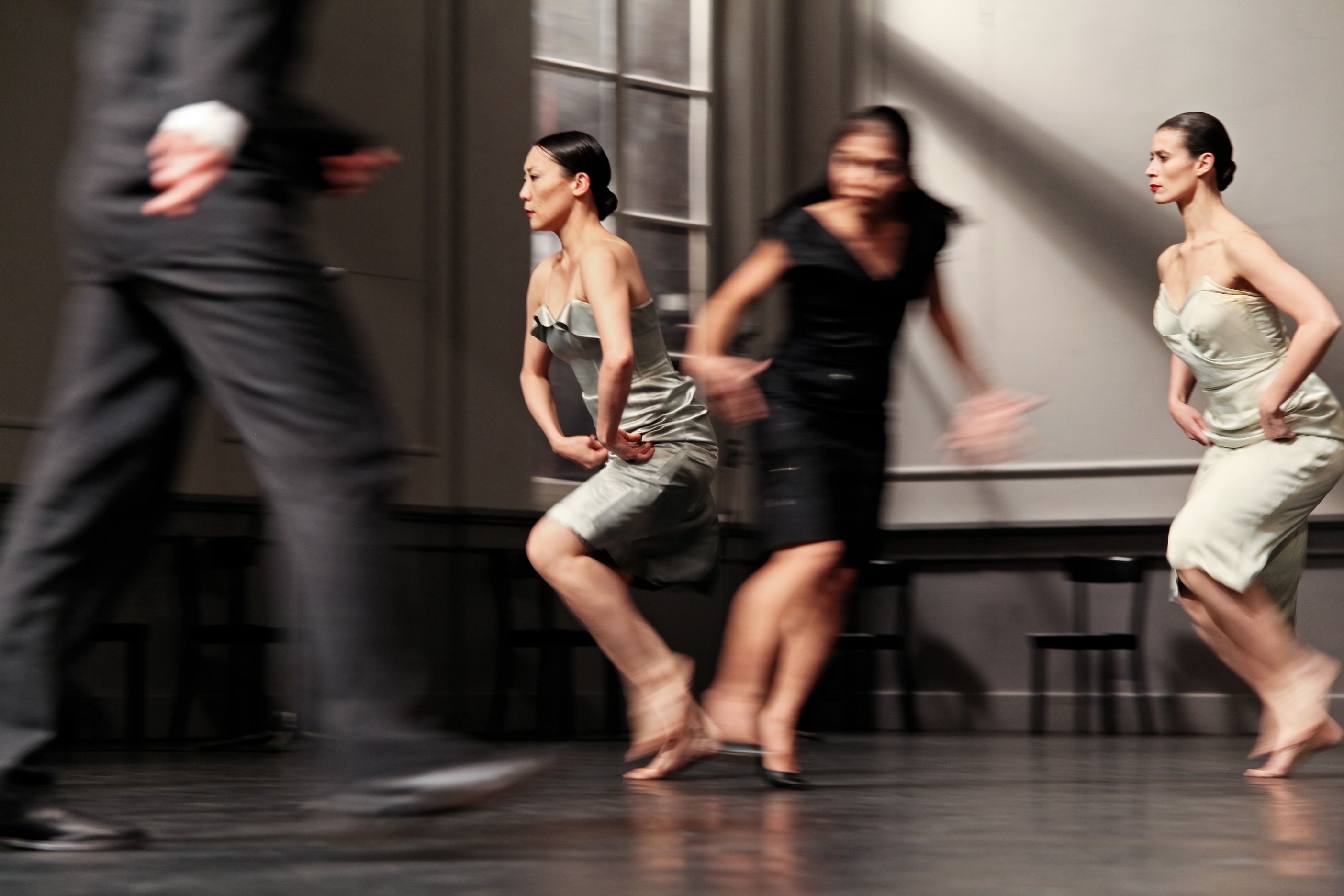
(above) KONTAKHTOF – PHOTO CREDIT Copyright : Olivier Look
Incomparable Pina Bausch Tanztheater at its Best!
Review by Jo Tomalin
Pina Bausch Tanztheater Wuppertal performed Kontakthof, June 11-21 2013, at the Théâtre de la Ville, Paris, France.
The legendary Kontakthof, premiered in 1978 by renowned choreographer Pina Bausch, is set in a dance hall and expresses the range of human emotions between men and women through humor, awkward seductions, tenderness, discomfort and sadness.
Starting with individuals standing close to the audience, a woman in a red cocktail dress checks out her side and front view in the imaginary mirror, a man checks his teeth and adjusts his hair, someone chases a woman with a fake mouse across the stage…Kontakthof brilliantly explores the phobias of people in public.
A banal set comprises a large gray curtain with a high wall backdrop and several rows of chairs – Scenography and Costume Design by Rolf Borzik. Throughout two hour plus performance the women wear an array of beautifully tailored multicolored satin cocktail dresses and long flowy silk robes, the men wear elegant suits, complemented by lyrical and dramatic music selections by Juan Llossas and Jean Sibelius.
This is dance theatre at its best and there’s plenty of both in Kontakthof performed by this superb company.
Dancers enter and exit playing tricks on each other, dance together or alone, make suggestive gestures and undress – always with a wry smile. A chorus line of impressive dancers dynamically advances towards the audience, couples do discrete and sad yet saucy slow dances, and at times the entire ensemble dances with restrained fluidity with movement dissolving into stillness. Bausch’s choreography surprises us yet also has fascinating repetitive motifs and sequences performed by exceptionally well-trained and tuned in dancers.
Theatre is infused in relationships, dances and clever situations. Disappointment shows in body language of several characters when a child’s mechanical horse ride does not work – until realization that a coin is needed – so they approach audience members for coins. In another short scene actors sit in a row downstage and talk to the audience in their own language (english, german, french, spanish), while a dancer playing the stage manager holds a microphone. A character walks around with a human size blow up doll getting reactions from onlookers…
These outstanding dancers are sexy, have perfect timing and invest themselves emotionally and believably in play and dance – transcending techniques to produce a piece of exciting visual sensory art that thrills audiences – the norm for this exceptional world-class company.
More information:
Théâtre de la Ville, Paris
Pina Bausch Tanztheater Wuppertal
 Jo Tomalin Reviews: Theatre, Dance and Movement Performances
Jo Tomalin Reviews: Theatre, Dance and Movement Performances
For Critics World
www.forallevents.com
Jo Tomalin, Ph.D.
More Reviews by Jo Tomalin
TWITTER @JoTomalin
Originally from England Jo Tomalin is currently based in the San Francisco Bay Area, where she is a reviewer for Dance & Theatre at www.ForAllEvents.com and works in the performing arts as a freelance movement specialist, director + actor. She is also a Professor of theatre performance in the School of Theatre & Dance at San Francisco State University, teaching Movement and Voice for actors, Storytelling and Acting.
Jo Tomalin studied Classical Ballet for 12 years. She graduated from London University’s Laban Centre teaching credential program in Modern Dance, Art of Movement & Choreography, then she trained in Physical Theatre, Masks, and Devised theatre at the renowned professional acting school “Ecole Internationale de Théâtre Jacques Lecoq” Paris, France. Jo studied Classical Acting at the Royal Academy of Dramatic Art (RADA), London; and holds an A.T.C.L. in Voice and Acting from Trinity College of Dramatic Art, London, and a PH.D. in Education from Capella University, MN, USA.




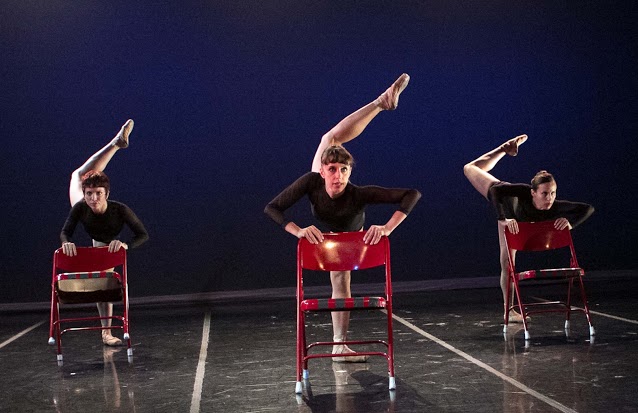

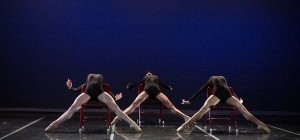
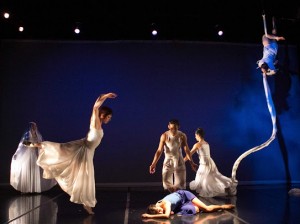
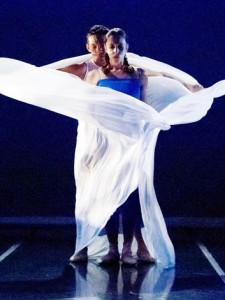
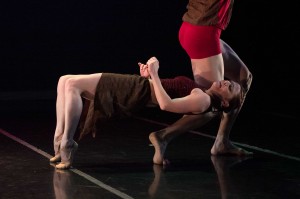
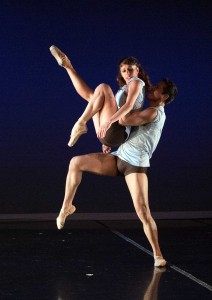



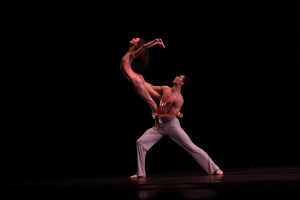
 Jo Tomalin Reviews Dance, Physical Theatre, and Movement Performances
Jo Tomalin Reviews Dance, Physical Theatre, and Movement Performances
